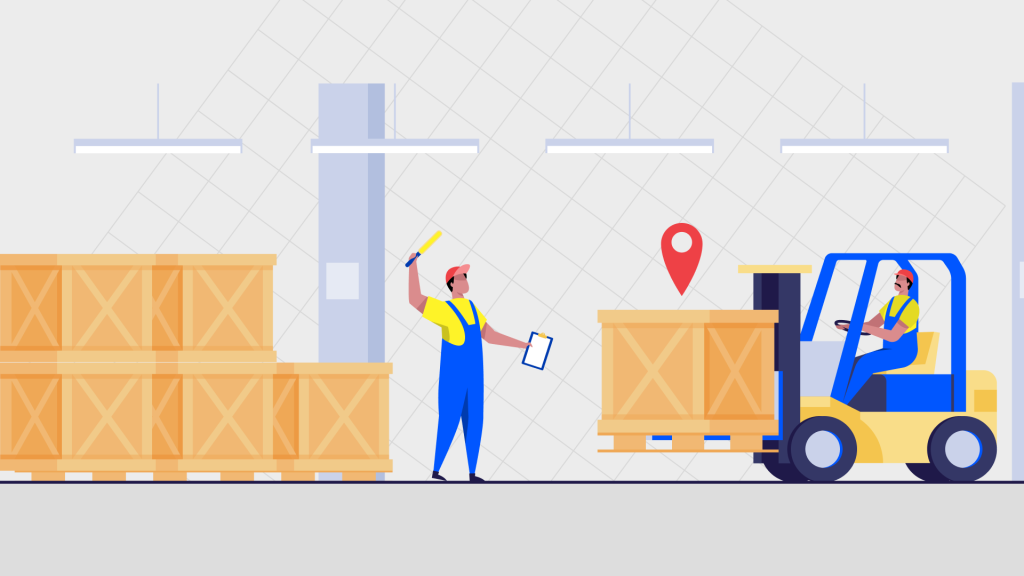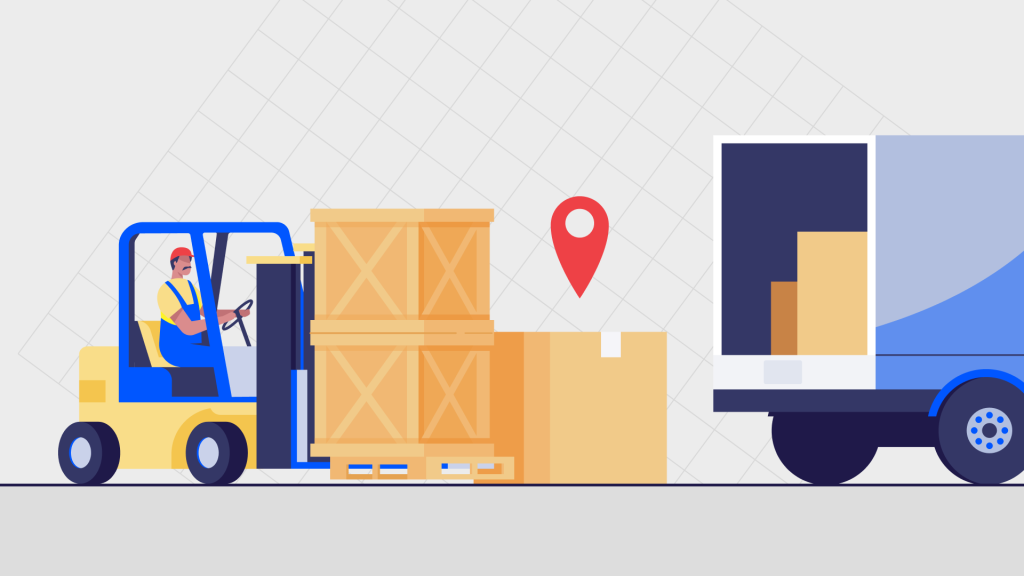How to improve your last mile delivery? To gain an in-depth understanding of what this growing logistics industry is all about, whether you are a business owner or a consumer, keep reading!
As of now, on-demand delivery has become a widespread trend among customers throughout the world, and it is becoming a very popular concept among businesses and entrepreneurs alike. As a result of the changing business world, it is now expected of business owners and entrepreneurs to come up with better marketing strategies in order to provide their customers with the best possible service. Your business might be able to gain some loyal clients for life if it can provide your clients with efficient delivery in the first place.
In addition to providing a better delivery experience to the customers, this also contributes to the growth and development of the organization as well as the growth of the organization itself.
First, let’s understand the concepts. What is the last mile in general? And what is the last mile delivery tracking?

Definition of Last mile delivery
Last mile delivery is the process of delivering a product from the closest hub or warehouse to the customer.
Last mile delivery is the most expensive and most time-consuming part of the shipping process, but it is important in the sense that it is the key to the overall satisfaction of the customer, since it is the last mile of the delivery process.
It was initially coined as the last mile in the context of telecommunications, where the last mile is a connection from the Internet service provider (ISP) to the location where the customer premises equipment is located, such as in the home or office of the user.
As a result of delivery companies’ distribution routes, the hubs are usually located close to the center points of common delivery routes. Deliveries between these hubs are usually handled by trucks that move large quantities of packages. The greater number of locations involved in last mile delivery means that it is not cost-effective to use large vehicles because of the number of potential locations involved. Therefore, smaller vehicles, such as vans, are used instead.
There is also the possibility that delivery attempts will need to be made multiple times, which can further increase costs and cause the last mile delivery to be the least efficient part of the delivery process.
Last mile delivery tracking is the process by which a package is tracked from the point that it leaves the distribution center until it reaches the customer. There are many reasons for ensuring that packages are delivered on time and in good condition by utilizing this type of tracking, but it is essential for ensuring that they arrive on time and in good condition.
When it comes to delivering packages on time and in good condition, this type of tracking is a must-have tool. You just can’t do logistics without it.
Almost all last mile delivery tracking systems rely on GPS technology to give the user an up-to-date status of the package as it moves through the delivery process. In addition to tracking where the package is located, the system is also able to provide details about how long it takes for the package to be delivered and if there are any delays along the way.
How does last mile delivery work?
As part of its features, business stakeholders can get information about where a certain order is located at any given time by using features such as route optimization, real-time alerts, data analytics, and access to delivery data. In addition to this, the organization’s productivity increases significantly as the delivery process is expedited.
The customer has the ability to estimate the exact time when the delivery will be completed when they have real-time information about the exact location of the vehicles and the delivery staff. As a result, the customer communication process with the company is improved as well as transparency is improved.
Every recent update of the delivery-tracking software provides all the details regarding the delivery. The excellent combination of real-time information along with improved efficiency results in shorter delivery times, as well as more accurate delivery times. A customer who is delighted with the service will be more likely to become a loyal customer. Thus, there will be more customers, more repeat customers, a better employee experience and, most importantly, a higher revenue generation rate.
Why delivery tracking is essential?
1) This comfortable feeling of knowing that a package is safely on its way. In order to provide a great deal of convenience, customers should be able to track their purchase order number all the way from the moment it leaves the warehouse until it reaches its final destination. Through the carriers’ website, customers can monitor their packages’ progress easily, eliminating the need to call customer service to get an update on their packages.
2) Insights for the shipper. Businesses can gain valuable insights into their operations by tracking their shipments in order to improve efficiency. For example a company can track the performance of its employees and fix the errors than happen on the way. It is possible to track shipments so that businesses can find out if freight is getting lost in transit as well as identify carrier or customer service issues. The final advantage that companies can get out of the detailed information provided by the websites of carriers is that they can use it to better manage their operations and make sure that their shipments arrive on time
Providing customers with the capability to track their shipments is one thing, but providing them with a tracking system that is easily accessible to them is quite another.
Below are some steps that can help improve a buyer’s experience with online shipment tracking:
– Provide tracking numbers
A tracking number is an essential cog in the order tracking machine, and it is the set of numbers that are associated with a particular order. This is a unique number that gets assigned to a specific order, and it is used by customers to check the status of their order. Without tracking numbers, shipment tracking would be impossible.
In order to make the tracking number as easy to find as possible after the customer has made their purchase, it is a good idea to include it in the confirmation email that the company sends to the customer or via SMS or any messenger.
– Let customers track their orders on the website
In order for customers to be able to track their orders, there are several ways in which they can view their order status. However, convenience is the most important aspect. Make sure the order tracking feature is available on your website; this will help make the process easier for shoppers.
– Make it clear how progress is tracked
There is no doubt that package tracking affects customer satisfaction once again. Adding this feature to your website as a retailer is not an expensive expense, but one worth the investment. To make the most of this investment, it is important to make sure that shipment tracking updates are as visible as possible. You want to make sure that it is visible on the homepage, and ideally in the top right corner of the page, not hidden in categories and subcategories.
– Estimate the time and date of delivery
Customers are most concerned with the estimated delivery date when it comes to order tracking. It should be the first thing that they see when they check up on their purchases, and ideally, it should be displayed at the very beginning of order tracking. As much as possible, please provide a rough estimate of the time it will take for the package to arrive.
– Send automated notifications
You can make the task of providing all customers with regular updates on their orders much easier by automating shipment tracking notifications. Send automated emails as orders are changed. This small step keeps your customers informed and gives them peace of mind. This small step keeps them informed and gives them peace of mind.

Other advantages of last mile delivery tracking
1. You save money
One of the largest benefits of investing in a shipping tracking system is that you can technically bring down your logistical burden. In the supply-chain, you can rapidly find costs everywhere — from your order ticketing stage, package, warehousing, transport, and many more. Shipping tracking allows you to reduce your outlay, as it allows you to both you and your customers to obtain better insights regarding the status of a freight.
Business owners can take advantage of shipment tracking systems by noting where the parcel is located, its specifications, and even the SKUs that are contained inside the parcel as well as the location of the parcel.
The advantage of this is that you will be able to reduce the amount of time and effort you will need to spend on repackaging, rewarehousing, inventory storage, and fuel costs as a result of incorrect product deliveries. As a result of a tracking system, you are able to handle customer complaints more efficiently, and even reduce such incidents, which in turn allows you to reduce the number of complaints.

2. Effective communication
Furthermore, shipment tracking allows you to open up different channels of communication within your organization, unlike what you were doing before. As an inventory manager, warehouse manager, or freight carrier, you may not have been able to coordinate with other key players in the past, but a tracking technology could finally assist you in doing so.
As a result of improved communication, you will be able to successfully execute more complex processes, which will enable you to improve your overall logistics processes, which will also result in more satisfied customers. In addition, you will be able to retain the most valuable assets and form better partnerships to strengthen your logistics process as a whole.
Essential features of software to track the delivery of the orders
– Scheduling the best route
You can optimize the routes for each delivery with a good tracking system that allows you to select the optimal route. As a result of this, the customer is also able to track the exact location and delivery personnel of the order, so he or she can estimate when the delivery will actually take place.
– Good visibility
In addition to providing a full level of transparency to the customers, delivery tracking systems allow them to monitor the delivery personnel and the vehicles that they use. In addition to helping the customer to estimate the delivery time, this also increases the overall efficiency of the organization by allowing them to see the exact location where the delivery person is.
– Shipment Status Updates
As a result of the tracking system, the customers receive the most recent delivery information. In case there is an unfortunate circumstance where a delivery is delayed, the customer will be able to get an idea of the situation rather than simply waiting for their delivery to arrive at an estimated time. The tracker provides real-time updates for the customer.
– How often the vehicle moves and how long it rests
With the tracking device, you will be able to see in real-time the speed of the vehicle, as well as how long that vehicle will be waiting for the delivery to go ahead.
– Sizes and weight of the order
– Notifications and reminders
Any recent reminders or alerts regarding the delivery will be displayed in the tracker in relation to the delivery that is being executed.
– Integration with other systems
If you haven’t made the investment in shipment tracking technology yet, maybe it’s time to reconsider your options. This technology could help you improve the level of service you provide your clients. If you haven’t invested in this type of technology yet, you might be missing out on a lot of benefits.



 Community
Community
